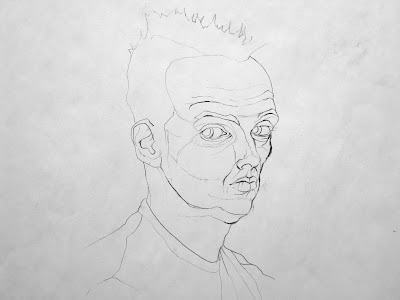Emil Nolde: Druckgrafik
Emil Nolde (1867-1953) was a German painter in oils and watercolour of landscapes, still life and figure compositions, lithographer, etcher and wood-engraver. Born near Nolde, a village in North Schleswig. Changed his name from Hansen to Nolde in 1902. Worked as wood carver in several furniture factories, studied at the School of Arts and Crafts in Karlsruhe 1888-9 and began to sketch landscapes and portraits in his spare time. Taught drawing at the Museum of Industrial Arts in St Gall, Switzerland, 1892-7. First oil paintings 1896. Decided to devote himself to painting and studied at Friedrich Fehr's private school in Munich 1898-9 and with Adolf Holzel in Dachau 1899; also spent part of 1899-1900 in Paris, where he attended the Académie Julian. In the following years, lived mainly in Berlin and on the island of Alsen. Began to paint Impressionistic landscapes and interiors, but with brilliant colours and vehement brushstrokes, and had his first one-man exhibition at the Galerie Ernst Arnold, Dresden, in 1905. Joined the Brücke group 1906-7, but left to work independently. Developed an Expressionist style 1909-10, with vivid colours and an emotional, visionary intensity; painted a number of religious compositions. Became interested in primitive art and accompanied an official expedition to the South Seas 1913-14. After 1916 spent the summers first at Utenwarf near Ruttebüll, then from 1926 at Seebüll; spent the winters up to 1941 in Berlin. Member of the Prussian Academy of Fine Arts in 1931. Published Das eigene Leben 1931 and Jahre der Kampfe 1934. Declared a 'degenerate' artist by the Nazis, who in 1937 removed all his works from German museums and in 1941 forbade him to paint, though he continued to make watercolours at Seebüll in secret. Died at Seebüll. [source]











%20-drawing_detail1494.jpg)
Comments